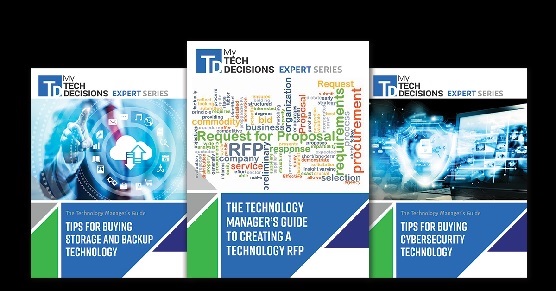For example, to help teachers lockdown their classrooms as well as provide them with peace of mind, many schools have installed locks on classroom doors that can be locked from the inside during an active shooter event. Fortunately for schools, the likelihood that a particular campus will experience a mass shooting is very small. The downside, however, is that if these locks are only to be used during an active shooter incident, they could be perceived as a poor investment because shootings happen so infrequently. This issue becomes even more pronounced if it has been several months or years since a big tragedy has taken place that has received national media exposure.
Campus Safety interviewed several school and university end users and consultants about what they paid for the various access control and lock solutions they’ve recently installed at their facilities. Due to the variations in campus/district size, project complexity and equipment installed, there is a wide range of costs.
- A university in the Midwest installed about 6,000 WiFi-enabled standalone locks (with prox or prox and PIN or NFC), costing $1,600 per door, including installation
- A university installed more than 4,000 locks and several hundred readers on interior doors, costing $1,200-$1,500 per door, including installation
- Val Verde Unified School District in California installed 300 Salto units at a cost of $500-$700 per lock and installation cost of $200-$300 per lock.
- According to Paul Timm of RETA Security consulting, Grade 1 cylindrical locks can range from $280-$350 and Grade 1 mortise locks can range from $350-$400 with an installation cost of about $130 (one hour of labor)
- Access control costs at ASU start at approximately $3,500 for a single reader due to the need for the initial controller. Each reader thereafter averages about $1,500-$1,900, depending on cabling and hardware complexity. “Standardization of the access control solution requires coordination and guidelines, which add to the install costs due to asbestos, fire-stop verification/certification, and quality on the cablework, activation and testing,” says ASU Director of Business Applications and Planning Laura Ploughe.
However, if the goal of the locks is also to reduce theft, vandalism and other crimes, and the campus tracks these incidents, the value of this solution is easier to see and justify. The campus just needs to compare the number of incidents before and after an installation.
With electronic access control, if the organization can realize additional benefits related to business operations and customer service, such as vending and possible revenue generated by off-campus merchants, the value of an access control solution is even more obvious. These additional functionalities could also encourage students, teachers, clinicians, administrators and other staff who possess magstripe, prox or smart cards to be more responsible with their access credentials.
“The more valuable you make the access card, the less likely people are going to share it with someone else,” says Dave Corbin, who is the director of facilities, engineering, public safety and parking at Newton- Wellesley (Mass.) Hospital. “If it’s only allowing you into parking, that’s one thing, but if it has money on it for the cafeteria, will you really trust your buddy with it?”
Another important key to the success of an organization’s access and lock equipment is its integration with Crime Prevention Through Environmental Design (CPTED) and other security technologies, such as video surveillance. For example, an access control system that senses a door is being propped open could trigger a security camera, which could then be viewed in real-time by an officer in the dispatch center.
Additionally, the technology must be supported by appropriate policies, procedures and training. If it isn’t, William Nesbitt of Security Management Services International believes the hospital, school or university could increase its liability exposure.
“To misuse the technology is almost worse than not having it in the first place,” he says.
Costs Vary By Campus and System Complexity
There are many factors that determine the price tag of a lock and access control system, including costs associated with the equipment, installation, database, maintenance, policies and training. For this article, CS interviewed several hospital, school and university end users and consultants about what they paid for the various access control and lock solutions they’ve recently installed at their facilities. Not surprisingly, the costs varied greatly.
Some campuses choose to only use mechanical hardware, which is less expensive to install than electronic access control but more expensive to operate. According to Allegion Electronic Lock Portfolio Leader Brad Akin, electronic access control can cost one-and-a-half to twice (or more) to install compared to mechanical hardware. However, offline access control solutions cost about 25 percent less to operate, and real-time wireless access control solutions can cost 75 percent less to operate than mechanical hardware.
Organizations installing a high-end electronic access control system will most likely also be tasked with integrating the student and staff information database(s) with the new access solution. This can be an extremely challenging task, depending on the complexity of the installation, number of campuses, number of students and staff, and the tasks associated with the database.
“In some cases, we can use the database they already have and apply it to more access points,” says Akin. “In other cases, they believe the technology has advanced so much that they look to enhance their current database and invest in incremental features and functions. That includes getting into off-campus dining and tying in [physical] access control with logical access and athletic event ticketing.”
It should be noted that campuses incorporating non-security features such as vending, off-campus dining, library services, etc. in their access credentials are now providing services that may make the institution more attractive to potential students, which may help recruitment efforts.
Because these factors are so variable and the way they interplay is so complex, CS was unable to determine an average cost or formula for this portion of the installation process. The good news is that access control manufacturers now realize their products need to be more compatible with other systems on campus, including HR and student enrollment. As a result, they have made the database integration process easier.
For the end users of an access control system, the management of the database can still be quite challenging, even if it is well designed and integrated. Corbin says that if a campus or district has a lot of people changing jobs, being terminated or being hired, managing all of this data can be quite time consuming. He estimates the database management costs for his hospital are $30,000-$40,000 per year.
If you enjoyed this article and want to receive more valuable industry content like this, click here to sign up for our digital newsletters!










Leave a Reply